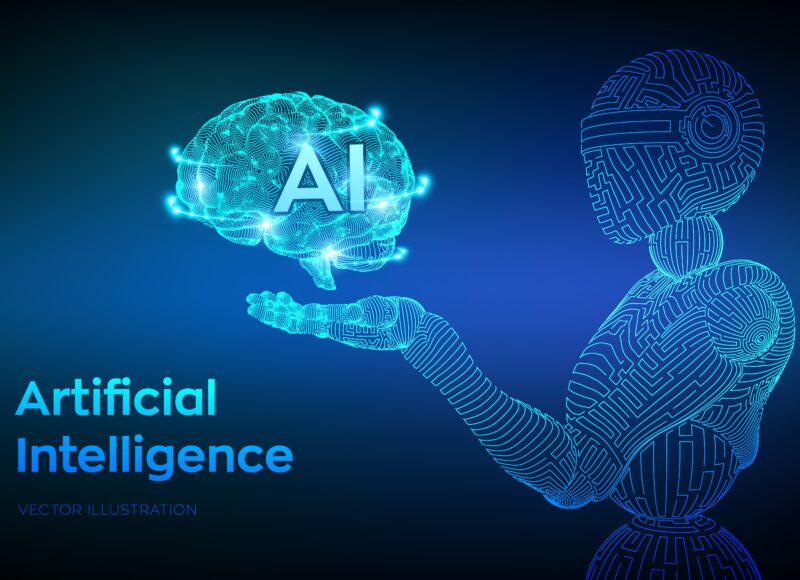Machine Learning with Python has gained widespread popularity due to Python’s simplicity, flexibility, and the vast ecosystem of libraries that support machine learning tasks. Python’s readability and versatility make it an excellent choice for both beginners and experienced practitioners looking to develop predictive models. Key libraries like NumPy, Pandas, and Matplotlib lay the foundation for data manipulation, preprocessing, and visualization, essential steps in any machine learning pipeline. They allow data scientists to clean, transform, and understand data, preparing it for machine learning algorithms.
At the heart of machine learning with Python are powerful libraries such as Scikit-Learn and TensorFlow, each serving different purposes. Scikit-Learn is widely used for classical machine learning algorithms like regression, classification, and clustering, which are the building blocks of data-driven applications. TensorFlow, along with Keras, is often used for deep learning applications, allowing practitioners to work with neural networks for tasks like image recognition, natural language processing, and time series forecasting. These libraries provide pre-built functions and algorithms, making it easier to implement, train, and evaluate models, from basic algorithms to complex deep learning architectures.
Python’s open-source community plays a crucial role in the machine learning field, offering numerous tutorials, resources, and toolkits that support continuous learning and development. With Python, machine learning practitioners can quickly prototype and iterate, thanks to Jupyter notebooks and powerful IDEs like PyCharm. This ecosystem, along with the language’s adaptability and widespread community support, makes Python a top choice for exploring, building, and deploying machine learning models across diverse domains, from finance and healthcare to retail and robotics.
Topics of Course
-
1.1 – Introduction to Machine Learning
-
1.2 – What is Machine Learning?
-
1.3 – Applications of Machine Learning
-
1.4 – Supervised Learning
-
1.5 – Unsupervised Learning
-
1.6 – Reinforcement Learning
-
1.7 – Getting Started with Python
-
1.8 – Python Libraries for Machine Learning
-
1.9 – Data Preprocessing in Python
-
1.10 – Hands-on Exercise: Linear Regression
-
2.1 – Python Basics for Machine Learning
-
2.2 – Data Types in Python
-
2.3 – Variables and Operators
-
2.4 – Control Structures: Conditional Statements
-
2.5 – Control Structures: Loops
-
2.6 – Functions in Python
-
2.7 – Modules and Packages
-
2.8 – Working with Files in Python
-
2.9 – Error Handling and Debugging
-
2.10 – Recap and Next Steps
-
3.1 – Data Exploration and Preprocessing
-
3.2 – Importance of Data Exploration
-
3.3 – Identifying Data Types
-
3.4 – Handling Missing Values
-
3.5 – Detecting and Treating Outliers
-
3.6 – Encoding Categorical Variables
-
3.7 – Feature Scaling
-
3.8 – Dimensionality Reduction
-
3.9 – Feature Selection
-
3.10 – Exploratory Data Analysis (EDA) Techniques
-
4.1 – Machine Learning Models
-
4.2 – What is Machine Learning?
-
4.3 – Supervised Learning
-
4.4 – Unsupervised Learning
-
4.5 – Regression Models
-
4.6 – Classification Models
-
4.7 – Decision Trees
-
4.8 – Random Forests
-
4.9 – Support Vector Machines
-
4.10 – Evaluation Metrics
-
5.1 – Implementing Linear Regression
-
5.2 – Introduction to Linear Regression
-
5.3 – Assumptions of Linear Regression
-
5.4 – Feature Engineering and Selection
-
5.5 – Handling Multicollinearity
-
5.6 – Model Evaluation Metrics
-
5.7 – Regularization Techniques
-
5.8 – Interpreting Model Coefficients
-
5.9 – Practical Applications of Linear Regression
-
5.10 – Limitations and Considerations
-
6.1 – Introduction to Classification using python
-
6.2 – Introduction to Classification
-
6.3 – Common Classification Algorithms
-
6.4 – Data Preparation for Classification
-
6.5 – Model Training and Evaluation
-
6.6 – Model Selection and Hyperparameter Tuning
-
6.7 – Interpreting Model Results
-
6.8 – Applications of Classification in Python
-
6.9 – Challenges and Future Directions
-
6.10 – Conclusion
-
7.1 – K-Nearest Neighbors (KNN) Algorithm
-
7.2 – Introduction to KNN
-
7.3 – Understanding the KNN Concept
-
7.4 – KNN Algorithm Steps
-
7.5 – Choosing the Optimal K Value
-
7.6 – Advantages and Disadvantages of KNN
-
7.7 – KNN Implementation in Python
-
7.8 – Preprocessing Data for KNN
-
7.9 – Evaluating KNN Performance
-
7.10 – Real-World Applications of KNN
-
8.1 – Introduction to Decision Trees
-
8.2 – What is a Decision Tree?
-
8.3 – Advantages of Decision Trees
-
8.4 – Disadvantages of Decision Trees
-
8.5 – How to Implement a Decision Tree in Python
-
8.6 – Preparing the Data
-
8.7 – Building the Decision Tree Model
-
8.8 – Evaluating the Decision Tree Model
-
8.9 – Visualizing the Decision Tree
-
8.10 – Conclusion and Key Takeaways
-
9.1 -Model Evaluation and Selection
-
9.2 – Importance of Model Evaluation
-
9.3 – Splitting Data into Training and Test Sets
-
9.4 – Evaluation Metrics for Classification Models
-
9.5 – Evaluation Metrics for Regression Models
-
9.6 – Overfitting and Underfitting
-
9.7 – Cross-Validation Techniques
-
9.8 – Hyperparameter Tuning
-
9.9 – Model Selection Strategies
-
9.10 – Conclusion and Key Takeaways
-
10.1 – Introduction to Clustering
-
10.2 – What is Clustering?
-
10.3 – Types of Clustering Algorithms
-
10.4 – K-Means Clustering
-
10.5 – Hierarchical Clustering
-
10.6 – DBSCAN Clustering
-
10.7 – Choosing the Right Clustering Algorithm
-
10.8 – Evaluating Clustering Results
-
10.9 – Preprocessing Data for Clustering
-
10.10 – Implementing Clustering in Python




